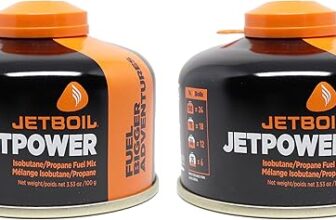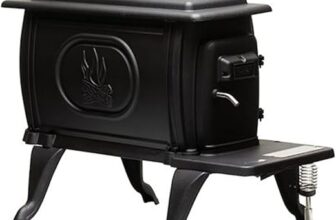
When choosing the right sleeping bag for outdoor adventures, understanding the differences between a Three-Season Sleeping Bag and a 3-4 Season Sleeping Bag is essential for comfortable camping experiences. While both are designed to provide warmth and protection against the elements, they cater to different climate conditions and usage scenarios. This comparison will highlight their key features, temperature ratings, and suitability for various outdoor activities, helping you make an informed decision that aligns with your specific needs.
**Year-Round Adventures

The 3-Season Sleeping Bag is designed for comfort and portability, with a temperature range of 41℉-77℉ (5℃-25℃) and a lightweight design ideal for camping, hiking, or travel. Made of waterproof nylon and cozy polyester lining, it is roomy enough for adults and kids, and can also be fully opened as a blanket for versatile use.
Year-Round Adventure

This 3-4 season sleeping bag is designed for both comfort and durability, featuring a waterproof polyester lining that keeps you warm in various weather conditions. Lightweight and portable, it includes a compression sack for easy transport and can be easily cleaned, making it ideal for camping, backpacking, and hiking.
Three-Season Sleeping Bag
Comfort Temperature Range
Comfort temperature is 50℉-68℉ (10℃-20℃) with a recommended limit of 41℉-77℉ (5℃-25℃).
Material Composition
Nylon shell, 190T polyester pongee lining, hollow microfiber fill.
Size and Weight
Dimensions: 86.6 x 31.5 inches (220 x 80 cm), weight: approximately 3.3 lbs.
Design Features
Bottom zipper allows air circulation; can be fully opened to be used as a blanket.
Care and Maintenance
Wipes clean easily, designed for customer satisfaction.
3-4 Season Sleeping Bag
Comfort Temperature Range
Keeps you warm and safe even in near-freezing temperatures.
Material Composition
100% polyester lining, high quality 290T polyester for durability.
Size and Weight
Dimensions: 33 x 86.6 inches, weight: around 4 lbs.
Design Features
Can zip two together for a larger size; also can be fully opened as a blanket.
Care and Maintenance
Easily cleaned by hand or machine; equipped with compression sack for storage.
Three-Season Sleeping Bag
3-4 Season Sleeping Bag
Three-Season Sleeping Bag
3-4 Season Sleeping Bag
Comparison table


Unique Selling Points (USPs)
- 3 Seasons Sleeping Bag:
- Perfect for warm camping in moderate climates.
- Great option for families with kids given its spacious design.
- Easy to carry and compress for travel.
- 3-4 Seasons Waterproof Sleeping Bag:
- Constructed for a range of weather conditions, making it versatile across seasons.
- Waterproof feature allows for use in rainy conditions.
- Designed to keep users warm even during cooler winter nights.
Pros and Cons
3 Seasons Sleeping Bag
- Pros:
- Lightweight and easy to pack.
- Adequate for spring and summer camping trips.
- Suitable for children and adults alike.
- Cons:
- Not ideal for very cold conditions.
- Lacks waterproof features.
3-4 Seasons Waterproof Sleeping Bag
- Pros:
- Versatile across seasons, usable in wetter conditions.
- Keeps users warm and dry.
- Spacious design fits adults and kids comfortably.
- Cons:
- Heavier due to waterproof materials.
- Might be overkill for summer camping needs.
Use Cases
- 3 Seasons Sleeping Bag:
- Best suited for summer and mild spring/fall trips.
- Ideal for casual campers and families with children.
- 3-4 Seasons Waterproof Sleeping Bag:
- Excellent choice for serious hikers and backpackers.
- Perfect for those camping in unpredictable weather.
Conclusive Assessment
While both sleeping bags provide solid features for campers, they shine in different areas. The 3 Seasons Sleeping Bag is exceptional for users seeking lightweight and easy packing, perfect for warm weather camping without the need for heavy-duty technology. On the other hand, the 3-4 Seasons Waterproof Sleeping Bag is a conditional winner, especially for those requiring protection against unpredictable climates and needing extended warmth during colder seasons.
Final Summary
In conclusion, if your camping plans are largely limited to warmer weather and you want a portable, lightweight option, the 3 Seasons Sleeping Bag will suit your needs well. However, if you wish to venture into unpredictable and cooler weather conditions while seeking durability and waterproof protection, the 3-4 Seasons Waterproof Sleeping Bag is an ideal choice. Both sleeping bags have their unique strengths; hence, your final decision should hinge on your specific camping preferences and expected weather conditions.


Guidelines for Comparing 3-Season Sleeping Bags
When shopping for a sleeping bag suitable for three seasons—spring, summer, and fall—considering various factors is crucial for ensuring a comfortable night’s sleep outdoors. This article provides a structured guideline for comparing three-season sleeping bags against similar options, like 3-4 season sleeping bags.
Temperature Rating
One of the most critical aspects of a sleeping bag is its temperature rating. Assess whether a sleeping bag is genuinely suited for three seasons or if it’s capable of handling colder conditions.
- 3-Season Sleeping Bag: Typically rated between 20°F and 32°F (-7°C to 0°C). Ideal for moderate cold and suitable for most conditions encountered.
- 3-4 Season Sleeping Bag: Generally rated below 20°F (-7°C), designed for colder conditions and occasional use in winter.
Insulation Type
The type of insulation affects warmth, weight, and compressibility.
- Down Insulation:
- Excellent warmth-to-weight ratio.
- Compressible, making it easy to pack.
- Less effective when wet unless treated with water-resistant treatments.
- Synthetic Insulation:
- Retains insulating properties when wet.
- Generally heavier and bulkier compared to down.
- Often more affordable but might lack warmth-to-weight efficiency.
Weight and Packability
The weight and compactness of sleeping bags are also essential, especially for backpacking setups.
- Consider the intended purpose:
- Backpacking: Opt for lighter, compressible options.
- Car Camping: Heavier, more comfortable options can be acceptable.
Shell Material
The material of the bag’s outer shell matters for durability and weather resistance.
- Water-Resistant Fabric: Critical if expecting rain or dew.
- Breathability: Allows moisture to escape, keeping you dry and comfortable.
- Durability: Higher-denier fabrics offer better resistance to ripping and wear.
Zipper Design
The zipper can greatly affect usability and comfort.
- Two-Way Zippers: Allow easy ventilation by unzipping from the bottom.
- Draft Tubes: Help retain heat by reducing cold spots near the zipper.
Design Features
Look for sleeping bags equipped with additional features that enhance comfort and utility.
- Hood Configuration: A snug hood retains heat and protects the head.
- Draft Collars: Prevent chilly air from entering the bag.
- Pocket Placement: Consider pockets for small items, such as your phone or snacks.
Cost and Brand Reputation
Cost is often an indicator of quality but is not always definitive.
- Budget Options: May lack key features but can suit casual campers.
- Premium Brands: Often come with quality guarantees and better customer support.
- Warranty and Return Policy: Check for these to ensure satisfaction with the product.
Using the Sleeping Bag
Lastly, understand the intended usage context of your sleeping bag for effective comparison.
- Camping Type: Select based on whether you will be camping in hot or cold environments.
- Terrain: Consider how the terrain might affect bag performance and comfort.













Great post! Have you guys ever tried the Big Agnes Fishhawk 30? It’s a solid option for those chilly nights and is super cozy! Would love to see it compared next time!
Thanks for the suggestion! The Big Agnes Fishhawk 30 is a great choice, and we’ll definitely consider it for future comparisons!
Thanks for the detailed comparison! I totally agree that the Three-Season Sleeping Bag is perfect for spring and fall camping trips. Definitely helps me decide what to pack for my next adventure!
Thanks for your feedback! Glad to hear you found the info useful for your camping plans!
I’ve been loving my REI Co-op Siesta 15 Sleeping Bag for winter trips. It keeps me super warm! Just thought I’d share since it’s been a game changer for me.
Thanks for sharing your experience! The REI Co-op Siesta 15 is definitely a favorite among many campers for its warmth. Happy camping!